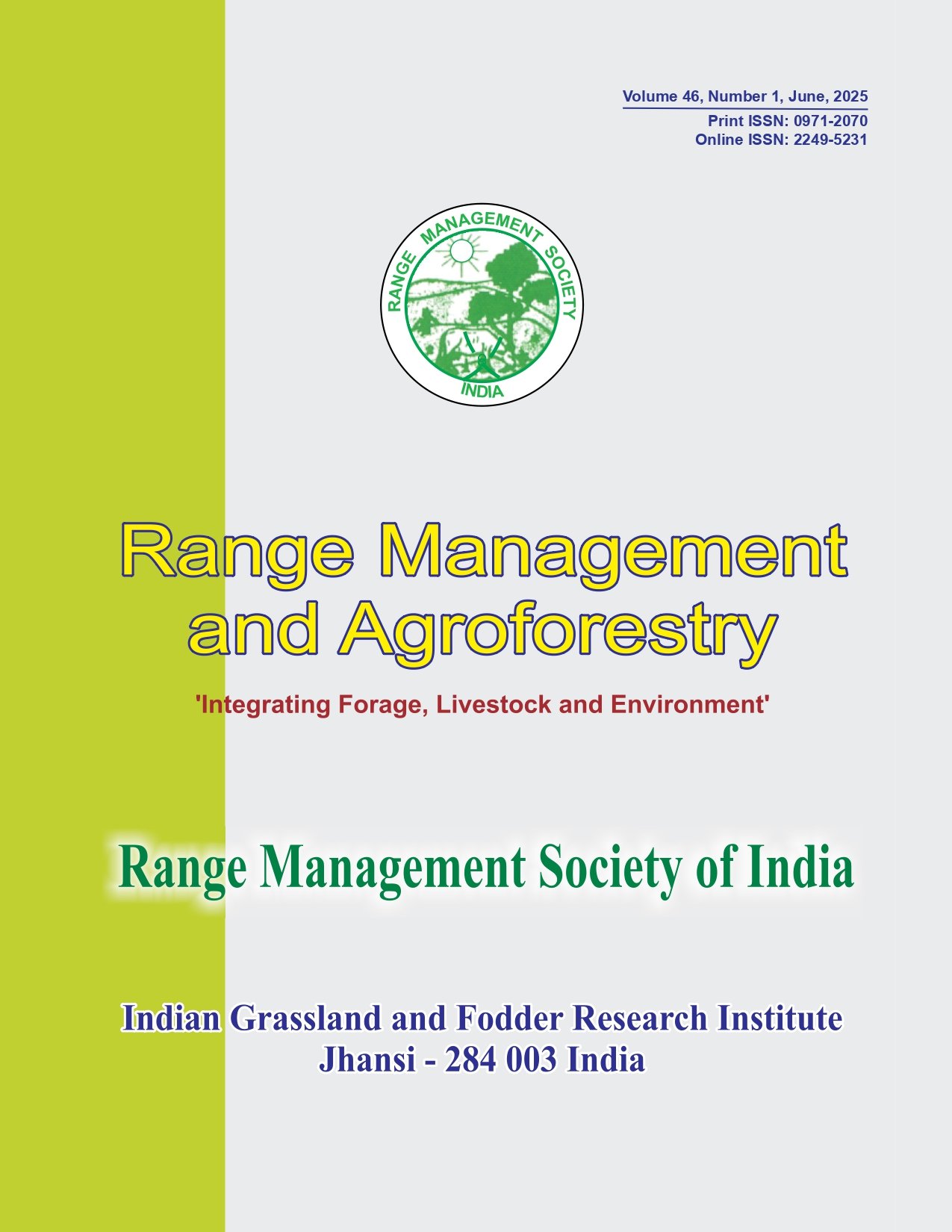Effect of integrated nutrient management on yield sustainability and soil fertility of forage cropping system
Keywords:
Economics, Fodder productivity, Integrated nutrient management, Nutrient uptake, Productivity, Recommended Dose of FertilizerAbstract
An experiment was conducted to study the influence of inorganic alone and in combination with manures and biofertilizers on productivity of sorghum + cowpea – lucerne forage cropping system during 2006-07 to 2009-10. The four year pooled data revealed significantly higher green forage, dry matter and crude protein yield of sorghum (527.35, 110.50, 9.36 q ha-1), cowpea (286.27, 40.28, 7.13 q ha-1) and lucerne (724.33, 154.02, 29.15 q ha-1), respectively due to treatment T6 -25 % N through FYM + 50 % N and 100 % P, K through inorganic fertilizer + biofertilizer (Azotobacter/Rhizobium). However, it was found at par with treatment T2 -100 % NPK through inorganic fertilizer and T3 - 25 % N through FYM + 75 % N 100 % P, K through inorganic fertilizer in respect of green forage yield of sorghum and lucerne, whereas, in respect of dry matter and crude protein yield it was at par with treatment T3 only. Under the sorghum + cowpea – lucerne forage cropping system, treatment T6 - application of 25 % N through FYM + 50 % NPK through inorganic fertilizer + biofertilizers recorded significantly highest gross returns, net returns and benefit: cost ratio (Rs. 1,91,981, Rs.1,01,815 per hectare and of 2.13, respectively). Similarly, the same treatment recorded maximum values for available N (253.43 kg/ ha), NPK uptake and NPK use efficiency while treatment T4 - 50 % N through FYM + 50 % N and 100 % P, K through inorganic fertilizer registered maximum values of available P and K content (19.43 and 385.13 kg /ha, respectively) in soil at harvest.




